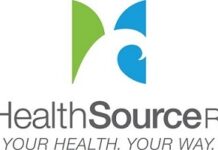
Dr. Sarah Fessler, president of the Rhode Island Medical Society, is affiliated with East Bay Family Health Care in East Providence. Fessler, who earned her undergraduate degree from Oberlin College and her medical degree from The Ohio State University College of Medicine, completed her residency in family medicine at Brown University and Memorial Hospital.
Fessler spoke with Providence Business News recently about RIMS’ role in a new pilot program to develop a toolbox for medical providers caring for opioid-addicted patients and patients at risk of developing an addiction to opioids. Her term as RIMS president began Sept. 23.
PBN: Can you explain the scope of the agreement with the American Medical Association that is designed to help Rhode Island’s health care providers care for patients with opioid addictions, and why was Rhode Island one of only two states chosen for this initiative?
FESSLER: The pilot program is a collaborative effort between the AMA, RIMS and the state of Rhode Island to build an electronic toolbox to provide physicians and other health care professionals with the key data, resources and practice-specific recommendations they can use to enhance decision-making and support clinical care for patients in pain and patients with an opioid use disorder or a suspected opioid-use disorder. This includes overdose prevention and treatment resources for the misuse of prescription opioids and heroin.
Rhode Island and Alabama were chosen by the AMA for several reasons, including our high incidence of drug-related mortality, high rates of opioid-related harms and of nonmedical use of opioid analgesics, strong medical society engagement in reducing harm from opioids and strong public sector engagement in reducing the epidemic here and a functional prescription drug monitoring program and other policies that help support enhanced physician decision-making.
Rhode Island and Alabama are not the only two states with these features, but the demographic, socioeconomic, geographic and other features of these states provide excellent opportunities to study the implementation of the pilot program, refine it and, hopefully, use it as a model upon which other states can build.
PBN: Several entities are involved in this initiative – the AMA, the RIMS, the Rhode Island Department of Health and the Department of Behavioral Health, Developmental Disabilities and Hospitals. What is RIMS’ role in this initiative?
FESSLER: We represent physicians’ interests and understand physicians’ needs better than anyone. That means being able to ensure that the national, state and local resources directly respond to what our physicians, who prescribe both opiates and medications to treat opiate addiction, will need in the toolbox. We also have direct insight into how best to work with the AMA and the state, and we can use those relationships to ensure that the final product will meet the needs of everyone.
PBN: What will the toolbox’s key elements be, and why did Rhode Island need the AMA’s resources to create and disseminate the toolbox?
FESSLER: Specifically, the toolbox will provide information to:
The AMA is the nation’s leading medical organization representing physicians; through the AMA Task Force to Reduce Opioid Abuse, the AMA has gathered the expertise of the nation’s leading medical associations. We are taking advantage of that work and applying it to our specific state needs.
PBN: How, when and to whom will the toolbox be disseminated; how will the entities involved in this initiative measure what impact, if any, the toolbox is having?
FESSLER: Through electronic and other means, we want to ensure that all physicians and health care professionals – and their office managers and staff – are aware of this toolbox and use its resources. We will send emails, post it online, promote it in our regular discussions and encourage people to use it in their practices. It will also be available to the state departments and other entities to post and disseminate.
This epidemic can be measured in many ways. Ultimately, we all want to see reduced mortality, reductions in overdose and harm, and increased access to treatment. We also will measure the use of the prescription drug monitoring program. Naloxone saves and other measures to be worked out with our state partners. This epidemic will not be solved quickly, but we will measure our progress. In fact, we already can point to signs of progress; Rhode Island leads New England and the vast majority of other states in reducing the number of opioid prescriptions written.
PBN: As a family practitioner, do you deal with this issue on a regular basis? Are you seeing concerning or reassuring trends in patients’ increasing or decreasing use, respectively, of opioids?
FESSLER: In family medicine, as well as in all primary care specialties, we deal with patients with chronic pain and patients with addiction on a daily basis. My colleagues and I must guide our patients through treatment decisions about choosing appropriate pain control modalities, always keeping in mind that, for some patients, opiates are an important adjunct in pain management. For others, chronic opiate use often worsens their tolerance of pain, leaving them experiencing more daily pain.
I definitely have seen a decreased use of narcotics for the management of chronic pain. However, I also know that a predictable byproduct of reducing the supply of divertible prescription drugs is an increase in the use of illicit/street drugs. Unfortunately, this is now occurring more often in the form of fentanyl-laced heroin use. Most of my primary care colleagues in Rhode Island have experienced the loss of one or more patients to this dangerous and generally fatal drug combination. This is why the RIMS, with support from the AMA and in partnership with the DOH and BHDDH, is working on the ability of physicians and other prescribers to combat the overdose epidemic. The toolbox will provide physicians with support to offer more nonpharmacological alternatives for pain treatment when appropriate, screen their patients for opiate misuse, guide patients into treatment and recovery and prevent deaths from opiate overdoses.










